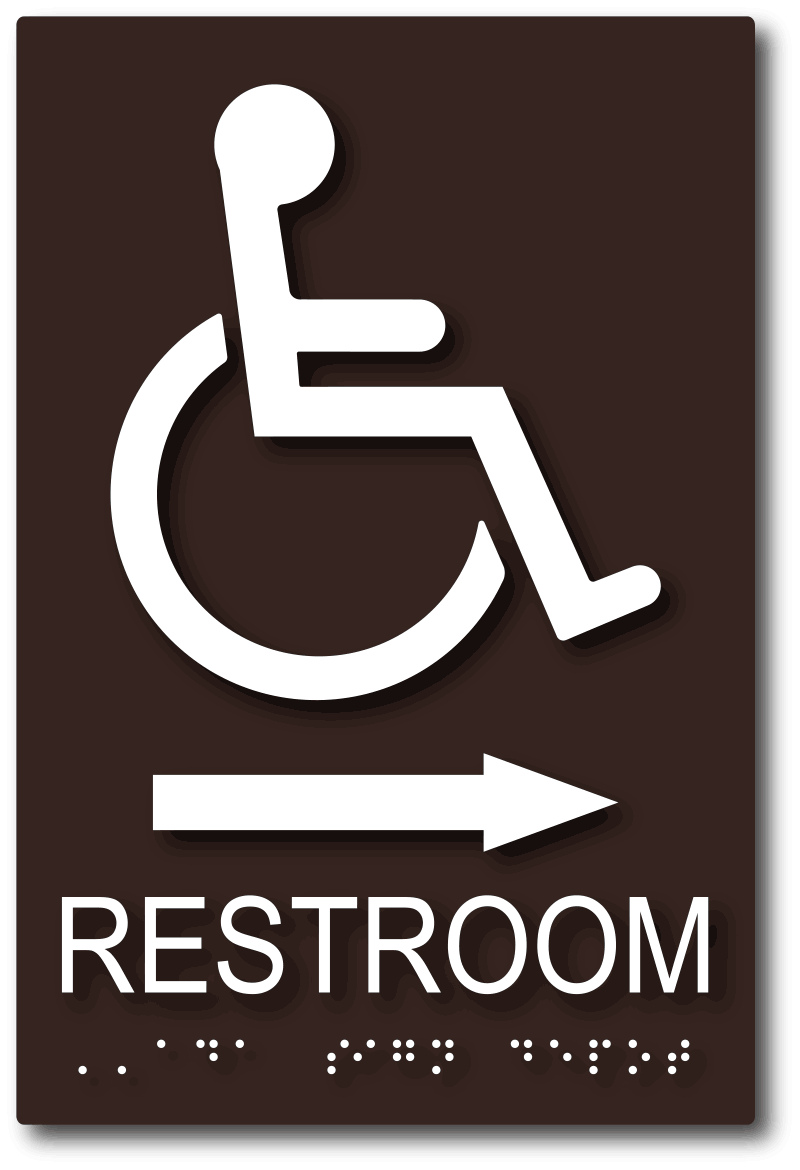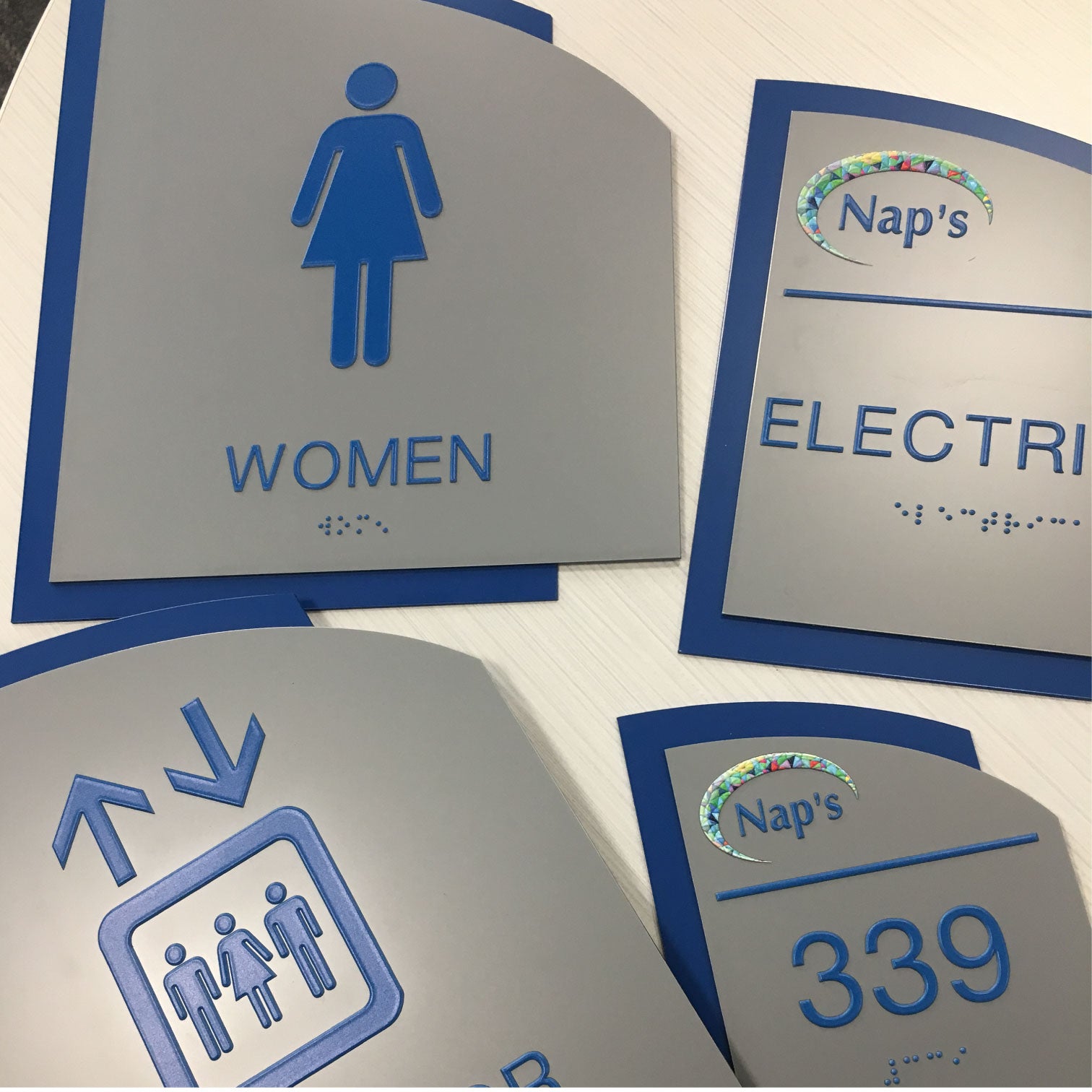ADA Signs: Important Tools for Inclusive Environments
ADA Signs: Important Tools for Inclusive Environments
Blog Article
Discovering the Trick Attributes of ADA Indicators for Enhanced Ease Of Access
In the realm of access, ADA signs act as quiet yet effective allies, making certain that areas are inclusive and navigable for people with impairments. By integrating Braille and responsive elements, these indicators break barriers for the visually damaged, while high-contrast shade schemes and understandable typefaces provide to diverse visual demands. Their tactical placement is not approximate yet instead a computed initiative to assist in smooth navigating. Yet, past these functions lies a much deeper narrative concerning the evolution of inclusivity and the ongoing commitment to creating fair areas. What much more could these indicators signify in our search of global accessibility?
Relevance of ADA Conformity
Making sure conformity with the Americans with Disabilities Act (ADA) is essential for fostering inclusivity and equivalent accessibility in public rooms and workplaces. The ADA, established in 1990, mandates that all public centers, companies, and transportation services fit individuals with handicaps, guaranteeing they take pleasure in the same civil liberties and opportunities as others. Compliance with ADA criteria not only meets lawful commitments yet also boosts a company's track record by demonstrating its dedication to variety and inclusivity.
One of the vital aspects of ADA conformity is the application of accessible signage. ADA signs are made to make certain that people with disabilities can easily browse via structures and spaces.
Furthermore, sticking to ADA laws can mitigate the risk of lawful consequences and possible penalties. Organizations that stop working to conform with ADA guidelines may deal with penalties or legal actions, which can be both damaging and financially challenging to their public photo. Therefore, ADA conformity is important to cultivating a fair environment for everyone.
Braille and Tactile Components
The consolidation of Braille and tactile components right into ADA signage personifies the principles of ease of access and inclusivity. These attributes are crucial for people that are blind or aesthetically impaired, allowing them to browse public rooms with higher self-reliance and self-confidence. Braille, a responsive writing system, is important in giving created information in a style that can be easily viewed through touch. It is normally put beneath the corresponding message on signage to make sure that individuals can access the information without aesthetic help.
Responsive aspects extend past Braille and include raised characters and signs. These components are created to be discernible by touch, allowing people to determine area numbers, bathrooms, exits, and various other crucial areas. The ADA sets details guidelines regarding the dimension, spacing, and placement of these responsive components to enhance readability and guarantee consistency across various atmospheres.

High-Contrast Color Plans
High-contrast color pattern play an essential role in enhancing the exposure and readability of ADA signage for people with visual disabilities. These plans are vital as they make the most of the distinction in light reflectance between text and background, ensuring that signs are quickly discernible, even from a range. The Americans with Disabilities Act (ADA) mandates the usage of particular shade contrasts to accommodate those with limited vision, making it a vital aspect of conformity.
The efficacy of high-contrast shades hinges on their capability to stand out in different lights conditions, consisting of poorly lit atmospheres and locations with glare. Normally, dark message on a light background or light message on a dark history is employed to accomplish optimum contrast. For example, black message on a white or yellow history provides a plain aesthetic distinction that aids in quick acknowledgment and comprehension.

Legible Fonts and Text Dimension
When thinking about the layout of ADA signs, the choice of clear font styles and proper message dimension can not be overstated. These aspects are critical for ensuring that signs are available to individuals with visual disabilities. The Americans with Disabilities Act (ADA) mandates that font styles need to be not italic and sans-serif, oblique, manuscript, extremely ornamental, or of unusual type. These demands assist guarantee that the text is quickly understandable from a range which the personalities are distinct to varied target markets.
The size of the text likewise plays a pivotal function in access. According review to ADA guidelines, the minimal text height must be 5/8 inch, and it ought to increase proportionally with viewing range. This is particularly essential in public spaces where signage demands to be checked out rapidly and accurately. Uniformity in text dimension adds to a cohesive aesthetic experience, helping individuals in browsing atmospheres efficiently.
In addition, spacing between lines and letters is indispensable to clarity. Adequate spacing prevents personalities from showing up crowded, boosting readability. By adhering to these criteria, designers can considerably boost ease of access, making certain that signage offers its intended function for all individuals, no matter their aesthetic capabilities.
Efficient Placement Methods
Strategic placement of ADA signs is vital for making best use of availability and guaranteeing conformity with legal requirements. Effectively positioned indicators direct people with impairments properly, assisting in navigation in public rooms. Key factors to consider include presence, closeness, and height. ADA guidelines state that indications must be placed at an elevation in between 48 to 60 inches from the ground to guarantee they are within the line of view for both standing and seated people. This basic height variety is important for inclusivity, making it possible for wheelchair users and individuals of varying elevations to access info effortlessly.
In addition, indications should be positioned nearby to the latch side of doors to enable easy read what he said identification prior to entrance. Consistency in indicator placement throughout a facility boosts predictability, lowering complication and improving overall individual experience.

Verdict
ADA indications play a crucial function in promoting availability by integrating functions that resolve the requirements of people with disabilities. Integrating Braille and tactile aspects makes certain important information is easily accessible to the visually impaired, while high-contrast color design and readable sans-serif fonts boost visibility across numerous lighting problems. Reliable placement approaches, such as suitable placing heights and critical locations, further assist in navigation. These components jointly promote a comprehensive setting, underscoring the relevance of ADA compliance in guaranteeing equivalent accessibility for all.
In the realm of ease of access, ADA signs serve as quiet yet powerful allies, ensuring that areas are inclusive and accessible for people with handicaps. The ADA, passed in 1990, mandates that all public facilities, employers, and transportation solutions suit individuals with impairments, guaranteeing they enjoy the exact same legal rights and opportunities as others. ADA Signs. ADA signs are made to make sure that people with impairments can easily browse through spaces and buildings. ADA standards specify that signs ought to be placed at a height in between 48 to 60 inches from the ground to guarantee they are within the line of sight for both standing and seated individuals.ADA signs play an important role in advertising availability by integrating functions that attend to the needs of look at more info individuals with disabilities
Report this page